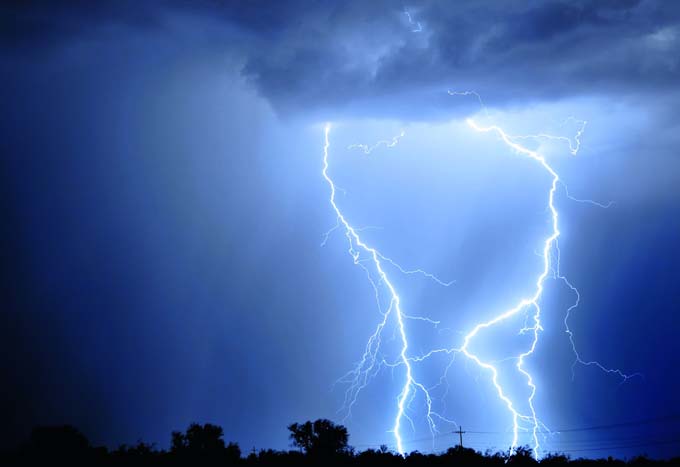37227 Lightning strikes in summer 2022
The Siemens Lightning Information Service (BLIDS) recorded a total of 37,227 lightning strikes in Switzerland from June 1 to August 31, 2022. Last summer, there were significantly more during this period - around 63,155. With 7.41 strikes per km2, the greatest lightning density was in the village of Correvon in the canton of Vaud. The second highest value was measured in the canton of Aargau: Williberg recorded 5.28 lightning strikes per km2.
- Northwestern Switzerland: Williberg/AG, 5.28 flashes per km2
- Eastern Switzerland: Ermatingen/TG, 3.83 flashes per km2
- Southern Switzerland: Ludiano/TI, 4.38 lightning bolts per km2
- Western Switzerland: Correvon/VD, 7.41 flashes per km2
- Central Switzerland: Feusisberg/SZ, 4.17 flashes per km2
- Zurich: Erlenbach, 3.48 flashes per km2
BLIDS uses around 150 connected measuring stations in Europe for recording. In addition to the BLIDS infrastructure in Switzerland, Siemens experts also manage the measurement network in Germany, Great Britain, France, the Netherlands, the Czech Republic, Slovakia and Hungary.
Determination accurate to 100 meters
The high accuracy of BLIDS is based on the Time-of-Arrival (TOA) principle. The flash location is calculated from the difference between the times recorded in the receivers. Thanks to the rapid increase in computing and storage capacities, BLIDS succeeds in transmitting data ever faster and more precisely. "Whereas it used to take up to 30 seconds for information about a lightning strike to be retrievable in the system, today it takes only ten," explains Stephan Thern, head of the lightning information service at Siemens. "Today, we can pinpoint about half of the lightning strikes to within less than 100 meters." The information can be relevant for operators of high-voltage power lines, for example. That way, if a line goes down, it can be quickly determined whether lightning or a fallen tree is responsible for the power outage. "If we confirm the lightning strike, the line can be brought back online much more quickly." To make lightning data available to customers on their PCs and mobile devices, the lightning service also provides cloud-based applications.
How the BLIDS system works
Every lightning bolt emits an electromagnetic signal, or electromagnetic waves. This information is registered with antennas and analyzed at Siemens' BLIDS headquarters in Karlsruhe. In addition to precise localization, this measurement and calculation method also makes it possible to detect the polarity and current strength as well as partial flashes within an overall flash. The more precise and faster the data, the greater the protection for people, industrial plants and infrastructure. The antennas are designed to detect which direction the signal is coming from. In combination with the information from other antennas, it is possible to determine the point of impact. The course of a thunderstorm can thus be displayed without gaps.
With the free BLIDS spy, interested parties can register under www.blids.de quickly and up-to-date information also about lightning strikes in Switzerland.
Source: Siemens
(Visited 293 times, 1 visits today)










